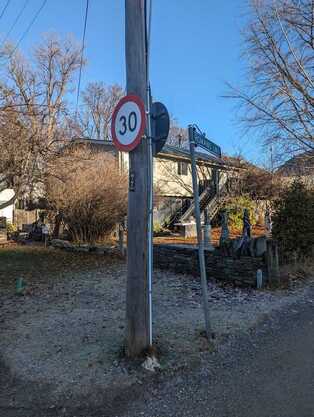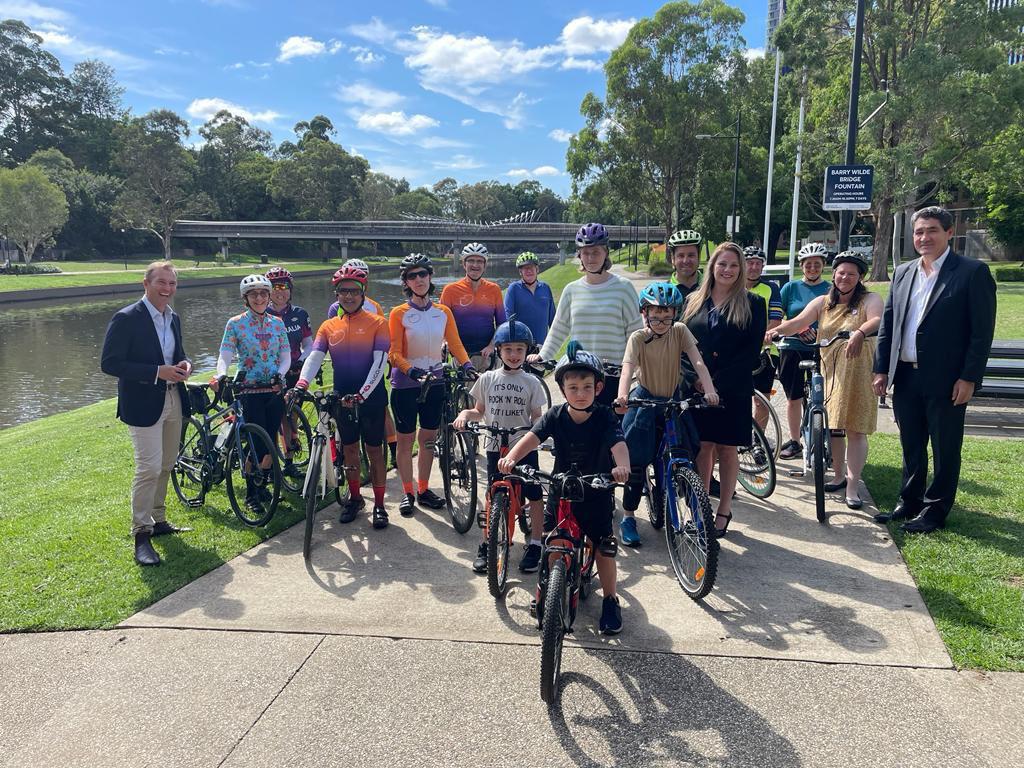|
Better Streets welcomes the new NSW Speed Zoning Standard however there is still room for improvement. For the first time NSW has a policy that articulates the street design requirements of 30km/h speed zones. 30km/h speed zones are essential for making urban areas safe for people walking and riding a bicycle. Their implementation is one of the Better Streets’ Key Asks and has been the core work of 30please, a Better Streets coalition member. The Speed zoning policy includes excellent principles, including:
The first requirement is that generally 30km/h zones will be “avoided” on arterial routes or where there is more than limited through traffic, this means that main streets on busy roads are likely to be ineligible for safe 30km/h speed limits. The second is that 30km/h speed zones can only be used where there is only one lane of travel for vehicles in each direction. This will require potentially costly work to be done to typical local streets particularly around intersections.  30 km/h zone sign post in New Zealand. Photo: Better Streets 30 km/h zone sign post in New Zealand. Photo: Better Streets The third is that 30km/h streets must be “self-explaining environments” which may require significant traffic calming measures to be built, such as physical treatments at the entry of streets and speed bumps which will add cost, time and complexity to implementation. Exactly what a "self explaining environment " is a term of art, and there are numerous examples of 30km/h zones from around the world which do not require special treatments, such as the 20mph arterials of London, or New Zealand. Whether this would be accepted by TfNSW remains to be seen. Presently, speed zones can only be changed by the state government transport agency but we look forward to a future delegation so that Councils can reduce speed limits on local streets consistent with the policy.
Better Streets looks forward to Transport for NSW minimising the barriers to the rapid rollout of 30km/h speed zones by providing clear guidance that most local residential streets should be 30km/h and providing a toolkit of low cost, fast roll-out interventions to support easy and consistent implementation particularly for quiet residential streets that will signal (not enforce) appropriate behaviours to drivers, similar to local low speed red/brick streets used in the Netherlands and Scandinavian countries. These could be simple entry treatments and/or signage for typical local streets, similar to some shared zones that use threshold paving or asphalt colour and signage to achieve desired behaviour. Preferably such a toolkit would be included in an update to the TfNSW Design of Roads and Streets Guide. This new policy represents a big step toward the normalisation of 30km/h speed limits, and, while there are still challenges, it opens the door for future improvements that could streamline the process of making more safe streets and is cause for (cautious) celebration.
1 Comment
Dear newly elected Ministers of the New South Wales Government,
Better Streets, would like to extend our congratulations on your recent election. We are thrilled to see such a diverse and talented group of individuals take on leadership roles in our government and look forward to working with you to improve the lives of our communities across the state. As you begin your new roles, we at Better Streets would like to support you in creating safer, more climate friendly and accessible streets for everyone. We believe that by working together across the agencies, we can achieve this goal and make a real difference in the lives of the people of New South Wales. To this end, we would like to offer some suggestions on how each of your portfolios could contribute to our vision of Better Streets: For the Health Minister, we request recognition of the co-benefits of promoting active transportation such as walking and cycling. For every kilometre walked, there is a $5.95 health benefit and for every kilometre cycled, a $1.65 benefit. By co-funding behaviour change programs such as Active Travel to Schools with the Education Department, we can encourage more people to walk and cycle, thereby reducing long-term health costs. For the Education Minister, we believe that setting lifelong healthy habits begins with children walking, riding, and scooting to school. We suggest co-funding an Active Travel to Schools Program with the Health Department to promote physical activity among children. The Transport and Roads Ministers could fund an accelerated program of delivery for 2,560 crossings every year, 1,000 kilometres of safe and direct cycle routes, and 30 km/h local residential streets and urban centres. By doing so, we can create safer, more climate friendly and accessible streets for everyone. The Planning Minister and Enterprise could work with Transport and Roads to support local businesses by funding streetscape upgrades that attract people to enjoy and linger. By doing so, we can improve the economic vitality of our communities while also making them more liveable. Finally, we suggest that the Department of Premier and Cabinet ensure these agencies are working together by setting Premier’s Priorities that put liveability at the heart. By prioritising Better Streets, we can create a more liveable and vibrant state for all. Once again, congratulations on your election, and we look forward to working with you to create Better Streets for everyone. Sincerely, Better Streets Our roads wouldn’t work too well if they weren’t connected.... and neither will our bike lanes..... It’s time to connect the dots. It’s time to Choose Better! Better Streets is launching an awareness campaign and will be creating a series of animations to engage the community about Better Streets.
This campaign is a collaboration with Tom Flood, Rovelo Creative, Two Giraffes, and a team of volunteers. Tom Flood was an ad man for the car industry. Then as a parent realised how unsafe the streets were and started turning his creative skills into reframing the mainstream narrative around road safety/road violence/active transportation and highlighting the imbalance on our streets. His videos are engaging and emotive and impactful. Two Giraffes are a local Sydney based female owned and directed firm with amazing team and experience. One of their core focus areas is social change films for some of the most recognised brands and Not For Profits in Australia. Better Streets representatives met with Minister Stokes to discuss our five key asks. Whilst Stokes will not be running for the upcoming state election, he emphasised that any future minister needs to retain “active transport” in their title to ensure that there is a voice in cabinet. Hopefully one day this won’t be needed, however in our current environment we still need a minister to champion active transport and better streets. We also discussed the important co-benefits for health and climate change action, because walking and cycling are key in helping us achieve net zero and healthy, connected communities. Better Streets emphasised that one of our roles is to give politicians at all three levels of government, and whichever party they may represent, the assurance that our community and alliance members want these changes for better streets: active travel to schools, safer traffic speeds, more pedestrian crossings, improved streetscapes to support local businesses, and safe cycleways. Minister Stokes' office confirmed that the current Government has committed $1.2 billion to active transport projects this year and over the next three years, including through grants to councils and as part of the delivery of major projects such as Metro and motorway projects. This would bring the NSW Government’s total spending on active transport to more $2 billion between 2014-15 and 2026-27. We are continuing to meet with politicians in the lead up to the NSW election. Photo source: Twitter @RobStokesMP
|
Archives
July 2024
Categories
All
|



 RSS Feed
RSS Feed